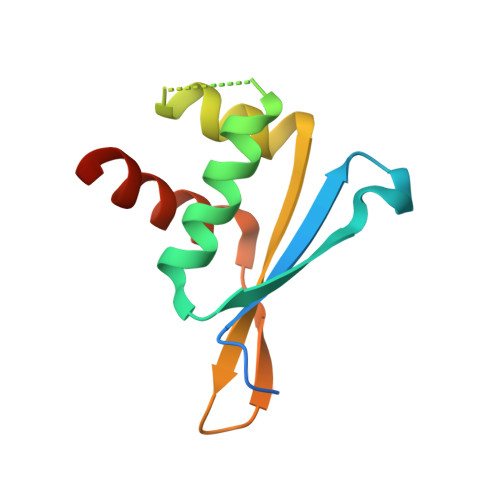Formation of S. pombe Erh1 homodimer mediates gametogenic gene silencing and meiosis progression.
Hazra, D., Andric, V., Palancade, B., Rougemaille, M., Graille, M.(2020) Sci Rep 10: 1034-1034
- PubMed: 31974447
- DOI: https://doi.org/10.1038/s41598-020-57872-4
- Primary Citation of Related Structures:
6S2W - PubMed Abstract:
Timely and accurate expression of the genetic information relies on the integration of environmental cues and the activation of regulatory networks involving transcriptional and post-transcriptional mechanisms. In fission yeast, meiosis-specific transcripts are selectively targeted for degradation during mitosis by the EMC complex, composed of Erh1, the ortholog of human ERH, and the YTH family RNA-binding protein Mmi1. Here, we present the crystal structure of Erh1 and show that it assembles as a homodimer. Mutations of amino acid residues to disrupt Erh1 homodimer formation result in loss-of-function phenotypes, similar to erh1∆ cells: expression of meiotic genes is derepressed in mitotic cells and meiosis progression is severely compromised. Interestingly, formation of Erh1 homodimer is dispensable for interaction with Mmi1, suggesting that only fully assembled EMC complexes consisting of two Mmi1 molecules bridged by an Erh1 dimer are functionally competent. We also show that Erh1 does not contribute to Mmi1-dependent down-regulation of the meiosis regulator Mei2, supporting the notion that Mmi1 performs additional functions beyond EMC. Overall, our results provide a structural basis for the assembly of the EMC complex and highlight its biological relevance in gametogenic gene silencing and meiosis progression.
Organizational Affiliation:
BIOC, CNRS, Ecole Polytechnique, IP Paris, F-91128, Palaiseau, France.























